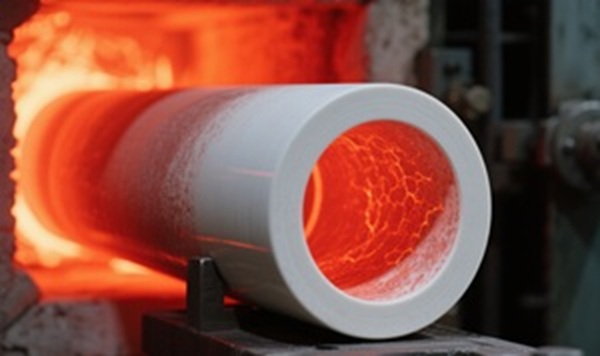What Are the Key Properties of Engineered Ceramics?
Engineered ceramics are advanced materials designed for specific industrial, aerospace, electronics, and biomedical applications. Unlike traditional ceramics, engineered ceramics are carefully formulated to achieve precise mechanical, thermal, and chemical properties. These materials provide a unique combination of hardness, wear resistance, thermal stability, and chemical inertness, making them ideal for high-performance and high-reliability applications. This article explores the key properties of engineered ceramics, their advantages, different types of ceramic materials, and their applications across multiple industries. The content also includes comparisons, technical tables, and practical insights to help researchers and engineers choose the right ceramic for their needs.
At Advanced Ceramics Hub, we specialize in high-quality engineered ceramics products, ensuring optimal performance for industrial and scientific applications.

What Are Engineered Ceramics?
Engineered ceramics, also known as advanced or technical ceramics, are materials designed with controlled compositions and microstructures to meet stringent performance requirements. They are manufactured using precise sintering, powder processing, and shaping techniques. Unlike conventional ceramics used for pottery or bricks, engineered ceramics provide enhanced mechanical strength, thermal resistance, and chemical stability. These materials can be tailored for electronics, cutting tools, biomedical implants, aerospace components, and more.
Key Characteristics of Engineered Ceramics:
| Property | Description | Typical Range/Value |
| Hardness | Resistance to indentation and wear | 7–9 Mohs |
| Density | Mass per unit volume | 2.0–6.0 g/cm³ |
| Fracture Toughness | Resistance to crack propagation | 3–10 MPa·m¹ᐟ² |
| Thermal Conductivity | Heat transfer efficiency | 5–300 W/m·K |
| Chemical Resistance | Stability in acids/bases | Excellent |
| Electrical Properties | Insulation or conductivity | Insulating to semiconducting |
Engineered ceramics combine properties of traditional ceramics with enhanced performance. They are capable of operating in extreme environments, including high temperatures, corrosive conditions, and high mechanical stress. These characteristics set them apart from standard ceramic materials.
Explore our high-quality engineered ceramics products.
Why Are Engineered Ceramics Important in Modern Industry?
Engineered ceramics play a crucial role in modern industry due to their ability to withstand harsh conditions while maintaining reliability. Their combination of hardness, thermal stability, and corrosion resistance makes them indispensable in aerospace, automotive, electronics, and biomedical fields.
Industrial Advantages of Engineered Ceramics:
| Advantage | Explanation |
| High Wear Resistance | Extends component lifetime under friction and abrasion |
| Thermal Stability | Maintains shape and properties at high temperatures |
| Corrosion Resistance | Protects against chemical attack in industrial processes |
| Lightweight | Reduces component weight without sacrificing strength |
| Electrical Insulation | Supports electronic and semiconductor applications |
With these advantages, engineered ceramics have become a key material choice for components where traditional metals or plastics fail. They provide solutions to challenges that require high reliability and durability.
What Are the Types of Engineered Ceramics?
Engineered ceramics are classified based on their composition and structure. They include oxide ceramics, non-oxide ceramics, and composite ceramics, each with distinct properties suitable for different applications.
Comparison of Engineered Ceramic Types:
| Type | Examples | Key Properties | Typical Applications |
| Oxide Ceramics | Alumina (Al2O3), Zirconia (ZrO2) | High hardness, corrosion resistance | Electronics, cutting tools |
| Non-Oxide Ceramics | Silicon Nitride (Si3N4), Silicon Carbide (SiC) | High thermal conductivity, wear resistance | Aerospace, turbines, automotive |
| Composite Ceramics | Ceramic-matrix composites (CMC) | Tailored toughness, fracture resistance | Aerospace, defense, structural components |
Choosing the right type of engineered ceramics depends on the application environment, temperature, mechanical stress, and chemical exposure. Each class offers a balance of properties for optimized performance.
How Are Engineered Ceramics Manufactured?
The production of engineered ceramics involves precise processes such as powder preparation, shaping, and high-temperature sintering. Additives may be included to improve toughness or thermal properties.
Manufacturing Steps of Engineered Ceramics:
| Step | Description |
| Powder Selection | Choose high-purity ceramic powders with controlled particle size |
| Shaping/Forming | Methods include pressing, extrusion, and injection molding |
| Sintering | Heat treatment to densify material and enhance mechanical properties |
| Machining | Grinding or laser processing to achieve the desired geometry |
| Surface Treatment | Coatings or polishing to improve wear and chemical resistance |
This controlled manufacturing ensures consistent performance, allowing engineered ceramics to meet rigorous industrial standards.
Why Do Engineered Ceramics Outperform Traditional Ceramics?
Engineered ceramics offer superior performance due to their precise composition and controlled microstructure. Unlike traditional ceramics, which are brittle and low in mechanical strength, engineered ceramics combine hardness with toughness, making them suitable for high-stress applications.
Performance Comparison: Engineered vs Traditional Ceramics
| Property | Traditional Ceramics | Engineered Ceramics |
| Hardness | Moderate | High |
| Fracture Toughness | Low | Moderate to High |
| Thermal Resistance | Moderate | Very High |
| Chemical Resistance | Moderate | Excellent |
| Machinability | Low | Moderate |
The advanced properties of engineered ceramics allow them to function under extreme heat, pressure, and chemical exposure, providing reliability where traditional ceramics fail.
How Do Different Ceramic Materials Compare in Engineered Applications?
Different engineered ceramics are suited for various applications depending on their specific properties. Here is a comparison of commonly used ceramic materials for industrial applications.
Comparison of Common Engineered Ceramics:
| Material | Density (g/cm³) | Hardness (Mohs) | Thermal Conductivity (W/m·K) | Key Applications |
| Alumina (Al2O3) | 3.9 | 9 | 30 | Electronics, wear parts |
| Zirconia (ZrO2) | 6.0 | 8 | 2 | Dental implants, cutting tools |
| Silicon Carbide (SiC) | 3.2 | 9 | 120 | Aerospace, turbines |
| Silicon Nitride (Si3N4) | 3.2 | 8 | 30 | Bearings, automotive engines |
| Boron Carbide (B4C) | 2.5 | 9.5 | 30 | Armor, abrasives |
Engineered ceramics are selected based on thermal, mechanical, and chemical performance, making it critical to match material properties with application requirements.
Request a custom quote for engineered ceramics products.
What Are the Advantages of Engineered Ceramics Over Metals and Polymers?
Engineered ceramics provide unique advantages compared to metals and polymers in high-performance applications. They combine low density with high hardness and chemical resistance.
Advantages Comparison:
| Material | Key Advantages | Limitations |
| Metals | High ductility, easy machining | Corrosion, high density, wear |
| Polymers | Lightweight, flexible | Low thermal/chemical resistance |
| Engineered Ceramics | High hardness, chemical resistance, thermal stability | Brittleness, complex machining |
These advantages make engineered ceramics ideal for applications that require extreme durability and resistance to harsh environments.
What Are the Challenges in Using Engineered Ceramics?
Despite their advantages, engineered ceramics present challenges in manufacturing and application. Their brittleness, difficulty in machining, and cost can limit their use.
Challenges of Engineered Ceramics:
| Challenge | Description |
| Brittleness | Susceptible to fracture under impact or tensile stress |
| Machining Difficulty | Requires advanced methods such as laser cutting or grinding |
| Cost | High production costs compared to metals and polymers |
| Limited Ductility | Cannot deform like metals under stress |
| Thermal Shock | Rapid temperature changes can cause cracking |
Understanding these challenges helps engineers design components that maximize ceramic benefits while minimizing potential failures.
What Are the Future Trends of Engineered Ceramics?
The field of engineered ceramics continues to evolve, driven by advancements in materials science, additive manufacturing, and nanotechnology. Future trends focus on improving toughness, reducing cost, and expanding applications in electronics, aerospace, and medical devices.
Future Developments:
| Trend | Potential Impact |
| 3D Printing | Complex geometries, reduced waste |
| Nanostructured Ceramics | Enhanced toughness and thermal performance |
| Hybrid Composites | Combination of metals and ceramics for tailored properties |
| Biomedical Applications | Biocompatible implants and devices |
| Energy Applications | High-temperature fuel cells and batteries |
These innovations will expand the use of engineered ceramics in industries requiring high reliability and extreme performance.
FAQ
| Question | Answer |
| What are engineered ceramics used for? | Applications include aerospace, electronics, automotive, biomedical implants, and cutting tools. |
| Can engineered ceramics withstand high temperatures? | Yes, most engineered ceramics maintain properties above 1000°C. |
| Are engineered ceramics brittle? | They are harder than metals but have moderate toughness; composites can improve fracture resistance. |
| How are engineered ceramics manufactured? | Processes include powder preparation, sintering, machining, and surface treatment. |
| Which engineered ceramic is best for electronics? | Alumina (Al2O3) is commonly used for insulation and substrate applications. |
| Can engineered ceramics be 3D printed? | Yes, additive manufacturing enables complex shapes and optimized microstructures. |
Conclusion
Engineered ceramics are advanced materials with unique combinations of hardness, thermal stability, chemical resistance, and mechanical strength. They outperform traditional ceramics, metals, and polymers in extreme environments and high-performance applications. By carefully selecting the type, composition, and manufacturing process, engineers can optimize these materials for aerospace, electronics, biomedical, and industrial uses. As technology evolves, engineered ceramics will continue to expand in scope, offering innovative solutions across diverse sectors. Understanding their properties and applications is essential for maximizing performance and reliability.
Looking for high-quality engineered ceramics products? Contact us today!
